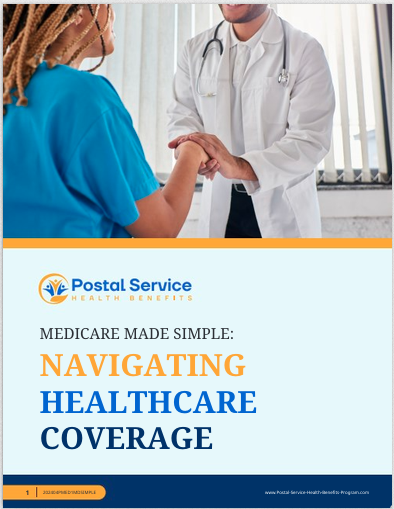Key Takeaways:
-
The transition to the Postal Service Health Benefits (PSHB) program in 2025 means significant changes for USPS employees, retirees, and their families. It’s essential to understand your options and the new requirements.
-
Enrolling in the right PSHB plan involves carefully evaluating coverage needs, especially regarding Medicare integration, costs, and supplemental benefits.
Understanding the PSHB Program
Starting in 2025, the PSHB program replaces the Federal Employees Health Benefits (FEHB) program for Postal Service employees, retirees, and eligible family members. This new system is specifically designed to address the unique needs of the USPS workforce and integrates with Medicare for many enrollees.
If you’re part of a USPS family, this shift requires careful planning to ensure you select the most appropriate health coverage. It’s not just about transitioning smoothly but also about making informed decisions that safeguard your family’s financial and physical well-being.
The PSHB program prioritizes comprehensive coverage while incorporating enhanced benefits tailored for different stages of life. Whether you’re an active employee, a retiree, or managing coverage for dependents, understanding these changes is the first step toward maximizing your healthcare benefits.
Enrollment: Key Details You Need to Know
Open Season Timing
The Open Season for PSHB enrollment took place from November 11 to December 13, 2024. If you enrolled or made changes during this period, those changes are effective as of January 1, 2025. Missing this window means you’ll need to wait for the next Open Season unless you experience a Qualifying Life Event (QLE).
Outside Open Season Adjustments
QLEs include significant life changes like marriage, divorce, or the birth of a child. Reporting these events promptly ensures your coverage adapts to your family’s evolving needs without unnecessary gaps.
Automatic Enrollment
Current FEHB enrollees are automatically enrolled in a corresponding PSHB plan for 2025. However, relying solely on automatic enrollment can lead to missed opportunities for better coverage or lower costs. Take the time to review your plan’s details and compare it with other available options to ensure it aligns with your health and financial priorities.
Medicare Integration: A Critical Component
For Medicare-eligible annuitants and family members, PSHB coverage coordinates with Medicare to provide comprehensive benefits. Here are the critical details:
Mandatory Enrollment in Medicare Part B
If you’re eligible for Medicare and were required to enroll in Part B, this integration ensures lower out-of-pocket costs and access to enhanced benefits. Failure to enroll in Part B when required can lead to penalties and even the loss of PSHB coverage. Certain exceptions, such as retirees who reached retirement age before January 1, 2025, may apply, but it’s essential to confirm your status.
Enhanced Benefits with Medicare
Many PSHB plans offer additional perks for those enrolled in Medicare Part B. These perks can include waived deductibles, reduced copayments, and even partial reimbursements for Medicare premiums. Understanding these benefits is key to maximizing your coverage and minimizing costs.
PSHB also simplifies the process of managing dual coverage by coordinating payments and ensuring minimal out-of-pocket expenses for covered services.
Costs to Consider
Premiums and Contributions
The government continues to contribute a significant portion of your PSHB premium. However, your share depends on the plan you choose and its level of coverage. Balancing affordability with comprehensive care is essential.
Consider whether you prefer a plan with lower premiums but higher out-of-pocket costs or one with a higher premium and broader coverage. Your decision should reflect your family’s expected healthcare usage over the year.
Deductibles and Coinsurance
In addition to premiums, deductibles and coinsurance play a significant role in your overall healthcare costs. These expenses can vary widely between plans and may significantly impact your budget, particularly if you or a family member requires frequent medical care or specialist visits.
Financial Planning
Create a budget for healthcare that accounts for premiums, deductibles, and potential out-of-pocket costs. By understanding the financial structure of your chosen plan, you can avoid unexpected expenses and ensure your family’s health needs are met without financial strain.
Supplemental Benefits: What’s Included?
PSHB plans often include a range of supplemental benefits, which can add significant value to your coverage. Examples include:
-
Dental and Vision Coverage: Many plans offer these services, but the extent of coverage varies. Check if your preferred providers are in-network to avoid unexpected out-of-pocket costs.
-
Hearing Services: Plans may include hearing exams and discounts on hearing aids. If you or a family member requires these services, prioritize plans that offer robust hearing coverage.
-
Wellness Programs: These programs encourage healthy behaviors and may include gym memberships, telehealth access, or personalized health coaching.
These benefits can provide cost savings and enhance your overall healthcare experience. Always compare the details of supplemental benefits to select a plan that matches your family’s lifestyle and health priorities.
Pharmacy Benefits: A New Approach
If you’re enrolled in Medicare, PSHB automatically provides prescription drug coverage through a Medicare Part D Employer Group Waiver Plan (EGWP). This integration simplifies prescription drug coverage while introducing key financial protections:
-
Out-of-Pocket Drug Costs: The new $2,000 annual cap on out-of-pocket prescription drug costs is a significant improvement, offering financial relief for families managing chronic conditions or requiring high-cost medications. This cap ensures predictable costs and prevents financial hardship.
-
Monthly Payment Option: The Medicare Prescription Payment Plan allows you to spread prescription costs over the calendar year, reducing the burden of high one-time payments. This flexibility can help you manage your healthcare budget more effectively.
Additionally, review your plan’s formulary to confirm coverage for any medications you or your family members take regularly.
Special Considerations for USPS Families
Dual Coverage
If you’re covered under a family member’s FEHB plan, you may not need to switch to PSHB. However, you should evaluate whether staying on that plan offers the best benefits and cost-effectiveness. Compare coverage levels, costs, and provider networks to determine the optimal choice for your family.
Retirees and Dependents
Retirees and their dependents must navigate both Medicare and PSHB enrollment. Medicare-eligible dependents should review coordination of benefits carefully to ensure comprehensive coverage without unnecessary overlaps or gaps.
Qualifying Life Events
QLEs can significantly impact your coverage options. Examples include changes in family size, relocation, or retirement. Reporting these events promptly allows you to adjust your health plan to meet new circumstances effectively.
Choosing the Right Plan: Tips for Success
Selecting a PSHB plan requires a strategic approach. Use these tips to make the best decision:
-
Assess Your Needs: Consider your family’s medical history, current health concerns, and anticipated healthcare usage.
-
Compare Plans: Review available options, focusing on costs, coverage, and supplemental benefits. Utilize PSHB’s online tools for side-by-side comparisons.
-
Check Provider Networks: Confirm that your preferred doctors, hospitals, and specialists are in-network to avoid out-of-pocket surprises.
-
Plan for the Future: Consider potential changes, such as dependent children aging out of coverage or evolving health needs for aging family members.
-
Ask Questions: Seek advice from PSHB representatives or your HR department to clarify uncertainties and ensure you’re making informed choices.
The Importance of Reviewing Your Annual Notice of Change (ANOC)
Every year, your health plan sends an Annual Notice of Change (ANOC) outlining updates to premiums, benefits, and coverage rules. Reviewing this document is essential to understanding how these changes impact your plan. By staying informed, you can avoid unpleasant surprises and adjust your coverage proactively.
Common Pitfalls to Avoid
Ignoring Medicare Enrollment Deadlines
Failing to enroll in Medicare Part B when required can lead to penalties and loss of PSHB coverage. Stay informed about deadlines and eligibility requirements to protect your benefits.
Overlooking Supplemental Benefits
While supplemental benefits may seem minor, they can provide significant cost savings and convenience. Ignoring them could mean missing out on valuable services that improve your healthcare experience.
Not Comparing Plans
Automatic enrollment might not provide the best coverage for your needs. Take the time to explore all available options and choose the one that best aligns with your family’s health priorities and budget.
Stay Informed and Proactive
The transition to PSHB marks a significant change in how USPS families access health benefits. Staying informed, proactive, and engaged is the best way to ensure you’re getting the most out of your plan. Regularly review your coverage, ask questions, and make adjustments during Open Season or after a QLE.
Your Health Coverage Matters
Taking the time to understand your 2025 health plan options under the PSHB program is essential for you and your family’s well-being. With the right plan, you can secure comprehensive coverage, manage costs effectively, and access valuable benefits tailored to your unique needs.





